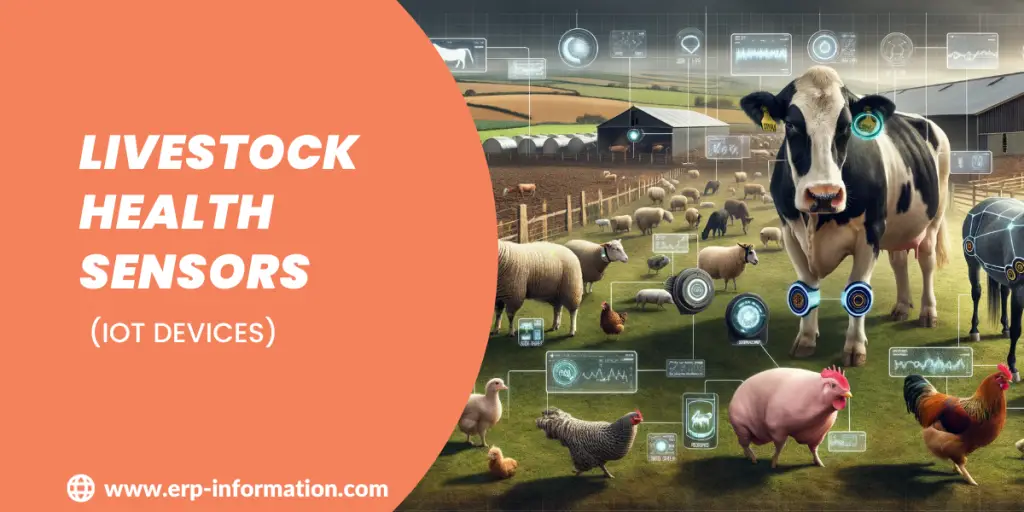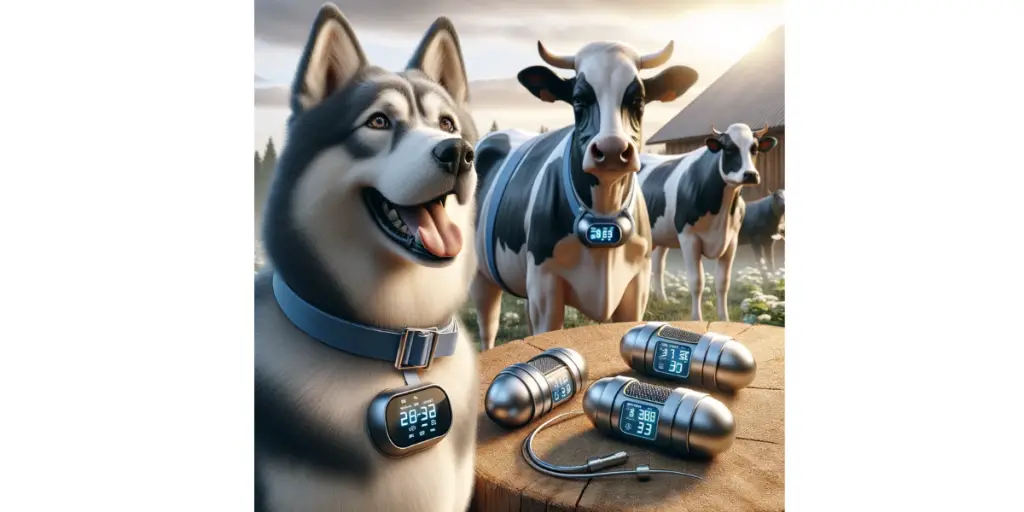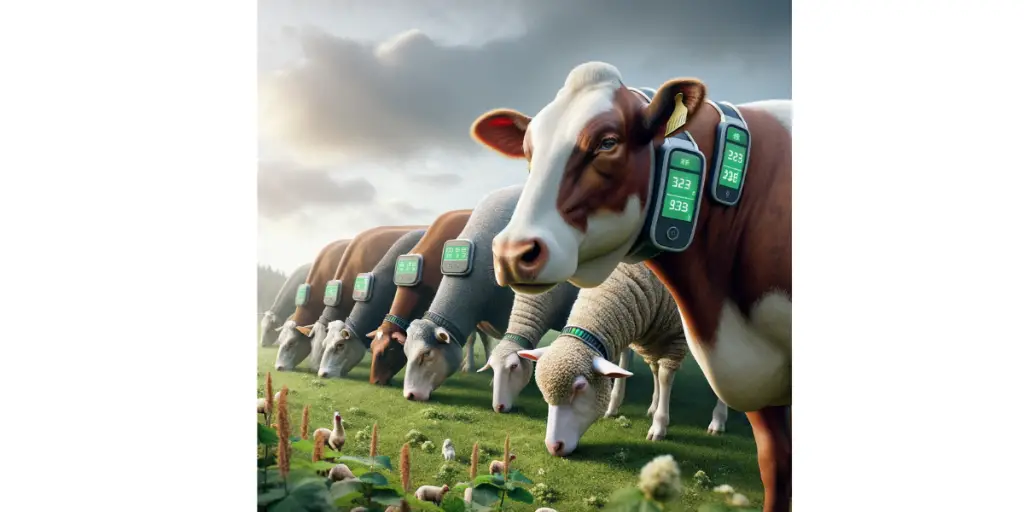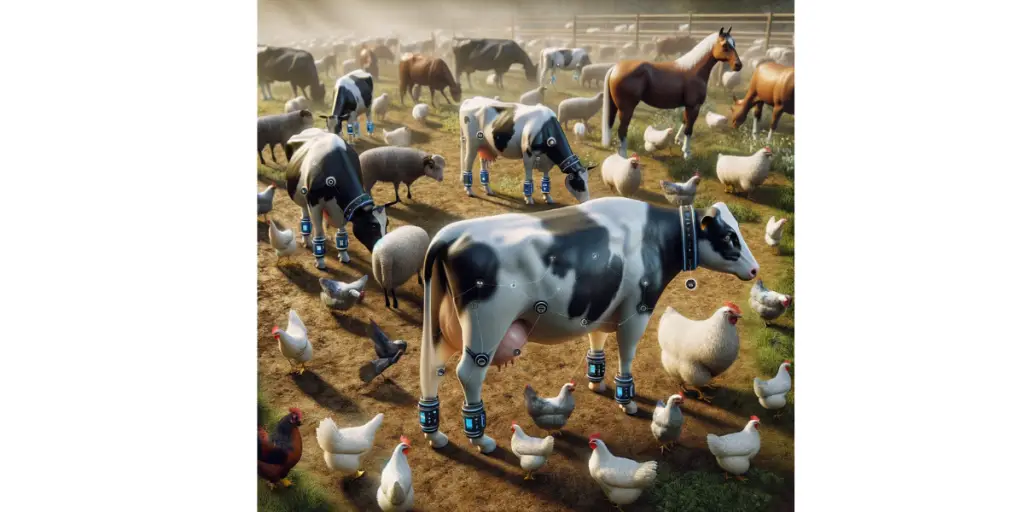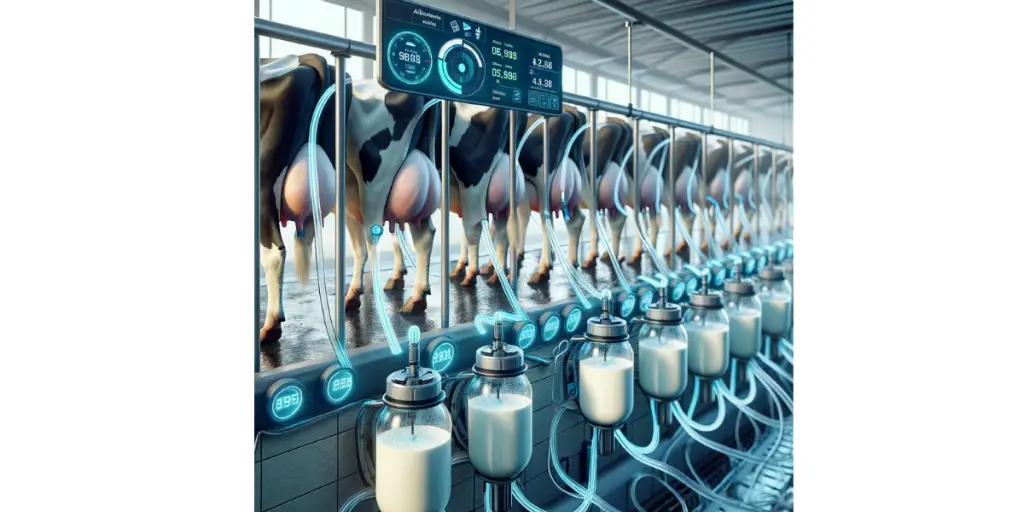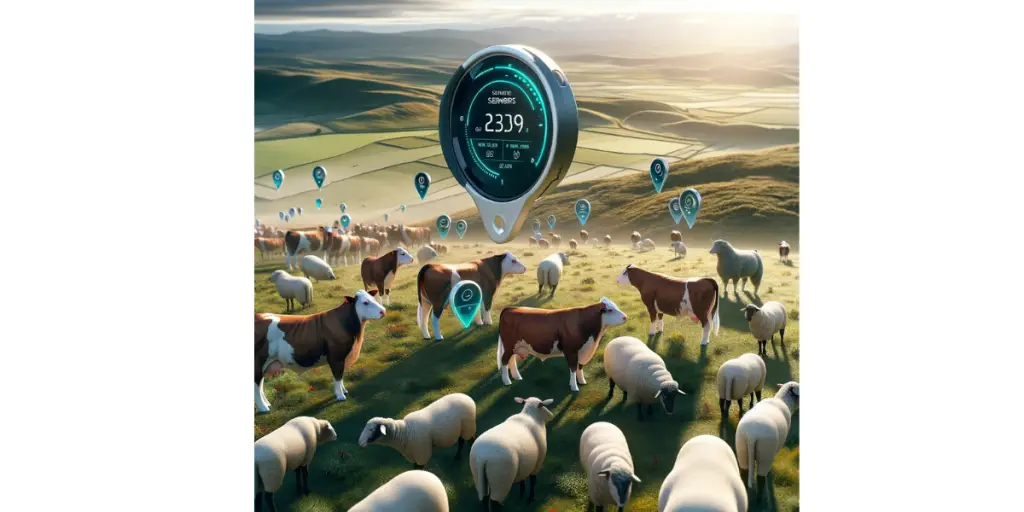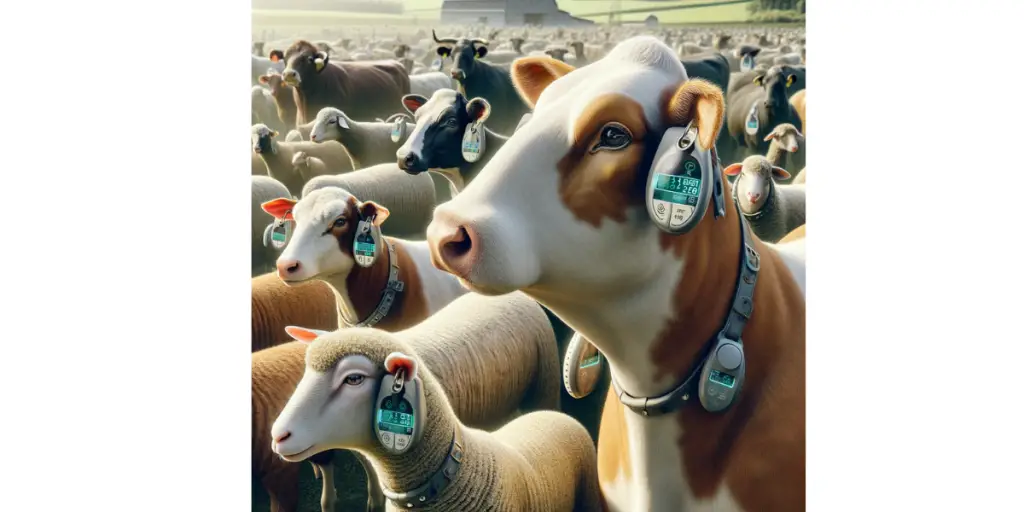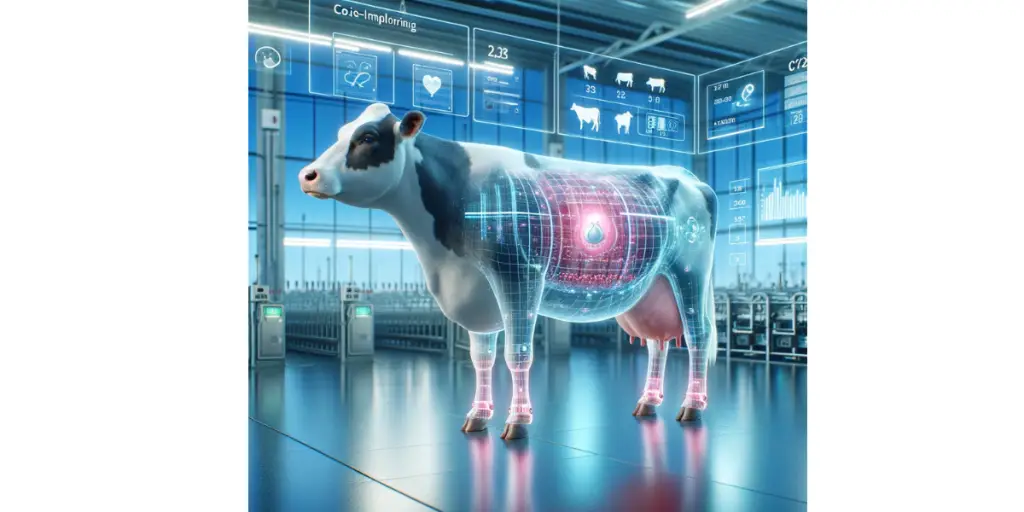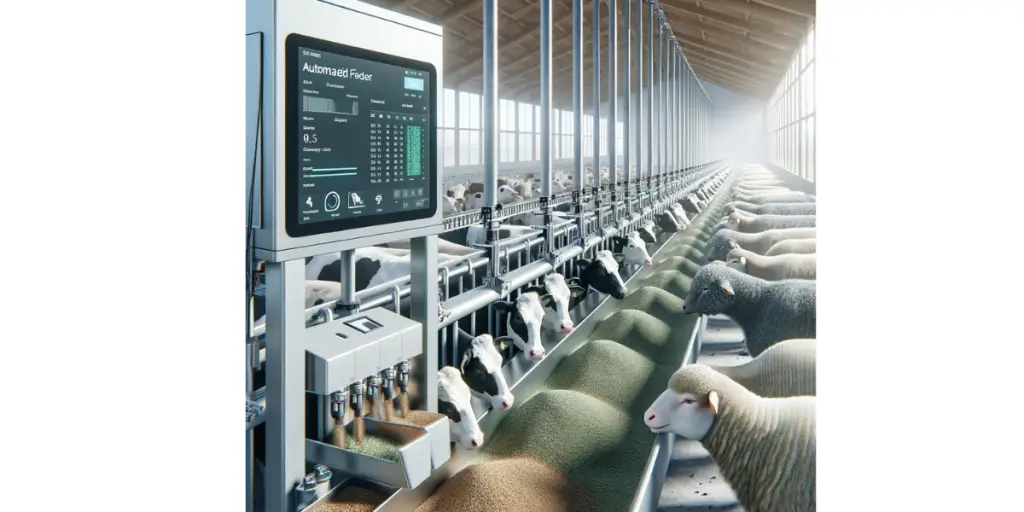Step into the world of modern farming where technology meets tradition. In this landscape, livestock health sensors shine as essential gadgets.
These devices, part of the Internet of Things (IoT), are game-changers in caring for farm animals.
In this blog, we’ll explore how these sensors work, their vital role in keeping animals healthy, and how they’re shaping the future of farming for the better.
Definition
Livestock health sensors are innovative devices designed to monitor and assess the well-being of animals raised in agricultural settings.
These sensors employ various technologies to gather real-time data on different aspects of an animal’s health, behavior, and environment.
They serve as proactive tools for farmers and veterinarians to detect early signs of illness, track animal movements, and optimize management practices.
What does livestock mean?
Livestock encompasses a wide range of domesticated animals that humans raise and nurture for various purposes, primarily driven by agricultural and economic interests.
This diverse category includes animals like cattle (both cows and bulls), sheep, goats, pigs, horses, and various poultry species such as chickens, turkeys, and ducks.
These animals are purposefully bred and reared for the production of meat, milk, eggs, wool, and hides, or even for their roles as working animals in agriculture.
The management and care of livestock are important aspects of animal husbandry, which involves feeding, sheltering, and overall well-being of these animals.
Unique aspects of livestock health sensors
Biometric Monitoring
Biometric Monitoring sensors can track vital signs such as body temperature, heart rate, and respiratory rate. They utilize non-invasive methods like wearable patches or collars equipped with sensors that continuously collect and transmit data.
This real-time monitoring helps identify deviations from normal patterns, indicating potential health issues.
Activity and Behavior Analysis
Sensors can detect changes in an animal’s behavior or movement patterns. For instance, irregularities in walking gait or reduced activity levels might signal pain or discomfort.
By analyzing these patterns, farmers can promptly intervene or adjust management practices to prevent further complications.
Environmental Monitoring
Livestock health sensors also measure environmental factors that impact animal health, such as humidity, temperature, and air quality within barns or grazing areas.
Feed and Water Consumption Tracking
Some sensors are capable of monitoring feed intake and water consumption, offering insights into an animal’s nutritional status.
Deviations from typical consumption patterns could indicate health issues or feeding problems that require attention.
Data Analytics and Predictive Modeling
These sensors generate large amounts of data that can be analyzed using machine learning and AI algorithms.
By correlating various parameters, predictive models can be developed to anticipate health issues or optimize farming practices, leading to more efficient management and improved animal welfare.
Remote Monitoring and Alerts
Livestock health sensors often come with connectivity features, enabling remote monitoring through mobile apps or online platforms. Farmers receive alerts or notifications in real-time when anomalies are detected, allowing for swift intervention and reducing the risk of disease spread among the herd.
Types of Livestock Health Sensors
Here are some common types of livestock health sensors:
Temperature Sensors
These sensors monitor an animal’s body temperature and ambient temperature, helping detect fever or heat stress.
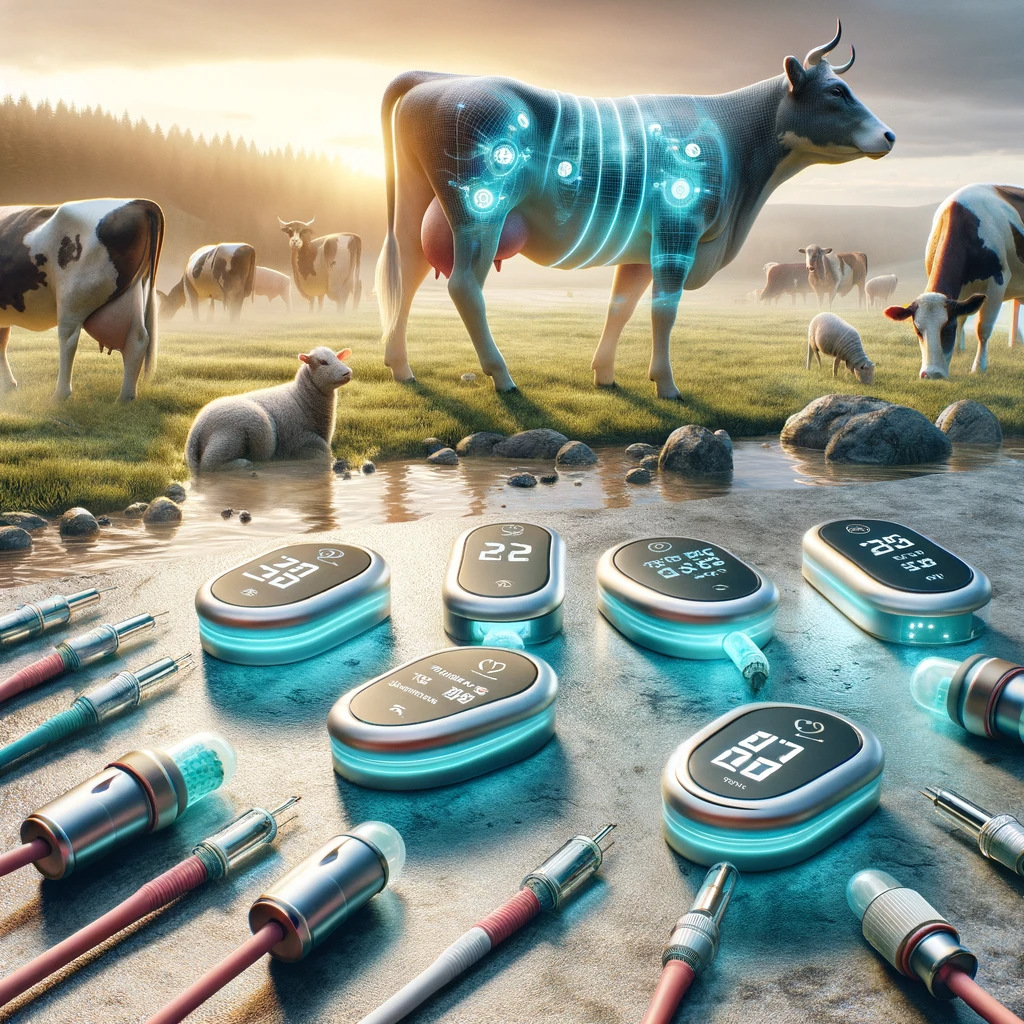
Heart Rate Monitors
Heart rate sensors measure an animal’s heart rate, which can be an indicator of stress or health issues.
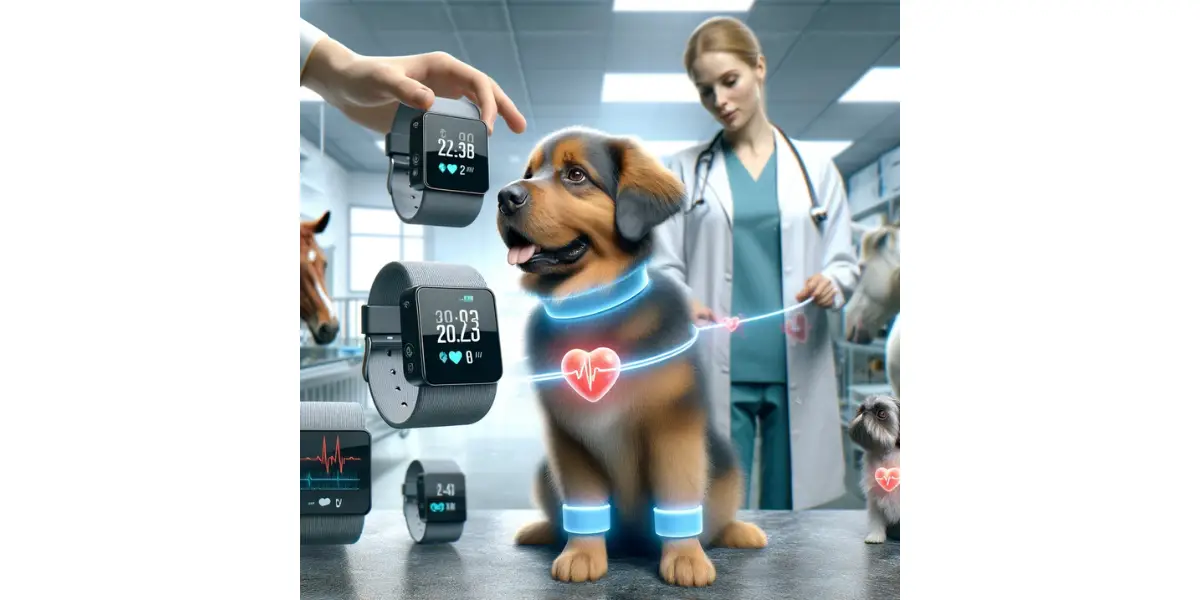
Breathing Sensors
These sensors track the number of breaths an animal takes per minute, which can signal respiratory problems.
Rumination Sensors
These sensors measure the chewing and rumination patterns of cattle, providing insights into their digestive health.
Activity and Behavior Sensors
These sensors monitor an animal’s movements and behavior, detecting changes that might indicate illness, estrus, or distress.
Milk Yield Monitors
Designed for dairy cows, these sensors measure the amount of milk produced, which can help detect health issues and optimize milking routines.
GPS and Location Sensors
These sensors are often used with livestock like cattle or sheep to monitor their location, detect if they are straying, or assess grazing patterns.
Ear Tags
Ear tags with embedded sensors can monitor various parameters, including temperature and location. They are often used for remote monitoring and identification.
Bio-Implants
Some livestock health sensors can be implanted in the animal’s body to monitor internal parameters like temperature or rumen pH. These are typically used for long-term health monitoring.
Automated Livestock Feeders
Automated systems deliver precise portions of feed to livestock based on their individual needs, optimizing feed efficiency.
FAQs
Are Livestock sensors suitable for all types of animals?
Yes, Livestock sensors can be adapted for various types of animals including cattle, sheep, goats, pigs, poultry, and even fish.
How do Livestock sensors communicate data to farmers?
Livestock sensors typically use wireless technologies such as Bluetooth, RFID, or cellular networks to transmit data to centralized systems or directly to farmers’ smartphones or computers.
Conclusion
Livestock health sensor devices are revolutionizing animal care, empowering farmers with real-time insights.
In their silent vigilance, they herald a future where technology and empathy converge, promising healthier livestock and a more sustainable agricultural landscape.
